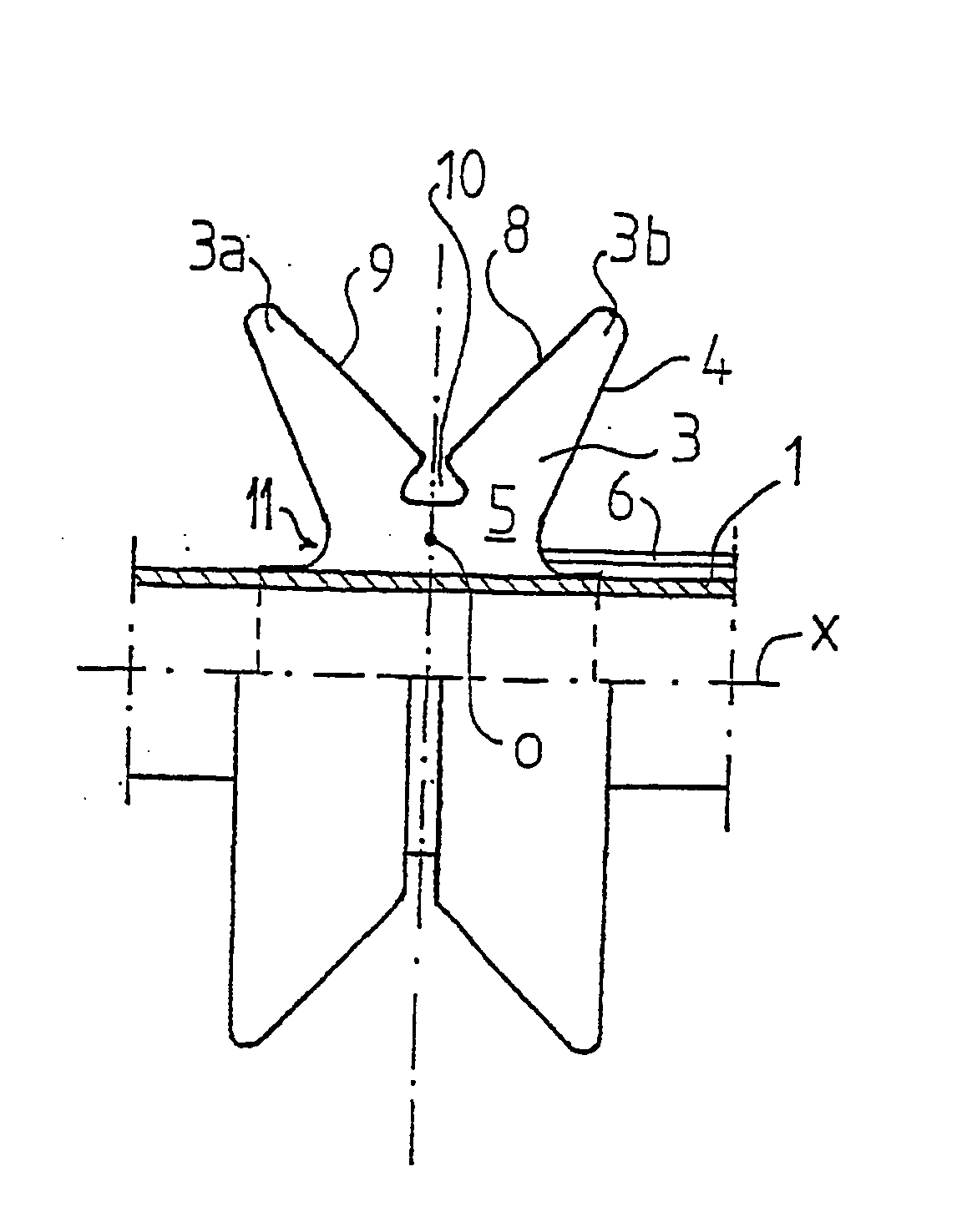Device for fixing a tube member
- Summary
- Abstract
- Description
- Claims
- Application Information
AI Technical Summary
Benefits of technology
Problems solved by technology
Method used
Image
Examples
second modified embodiment
[0039] FIG. 10 discloses the invention, according to which the body 3 has a long extension directly at the tube member 1 and a shorter extension at the line b in the proximity of the tube member 1. In the proximity of the outer extent, line a, the longitudinal extension is longer than at the line b, but shorter than directly at the tube member 1. In this embodiment, the inner space 5 is completely enclosed by the casing. The casing 4, and thus the body 3, is consequently displaceable on the tube member 1 in the direction of the centre axis x.
[0040] FIG. 11 discloses a third embodiment, which differs from the first and second embodiments in that the body 3 includes two separate body parts 3a and 3b, which both are attached to the tube member 1 at a distance from each other. Preferably, both body parts 3a, 3b are supplied with a fluid in such a way that substantially the same working pressure prevails in each body part 3a, 3b.
PUM
 Login to View More
Login to View More Abstract
Description
Claims
Application Information
 Login to View More
Login to View More - R&D
- Intellectual Property
- Life Sciences
- Materials
- Tech Scout
- Unparalleled Data Quality
- Higher Quality Content
- 60% Fewer Hallucinations
Browse by: Latest US Patents, China's latest patents, Technical Efficacy Thesaurus, Application Domain, Technology Topic, Popular Technical Reports.
© 2025 PatSnap. All rights reserved.Legal|Privacy policy|Modern Slavery Act Transparency Statement|Sitemap|About US| Contact US: help@patsnap.com



